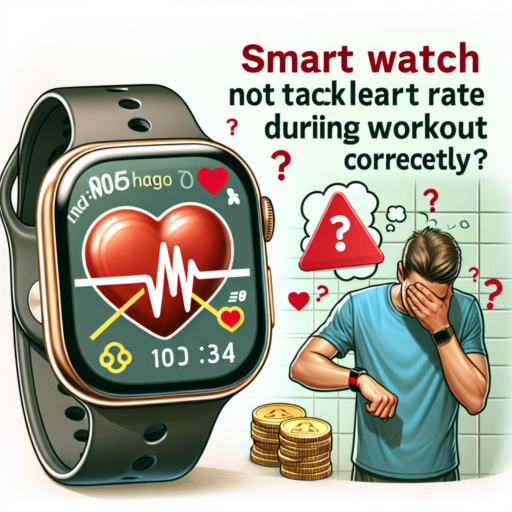Where should a heart monitor be placed on a woman?
Proper placement of a heart monitor is crucial for obtaining accurate data, particularly in women, due to the anatomical differences between genders. The positioning can slightly vary depending on the type of heart monitor being used but generally follows a consistent guideline. Understanding the correct positioning can help ensure that the heart monitor records the electrical activity of the heart accurately.
Optimal Positions for Wearable Heart Monitors
For wearable heart monitors, such as chest straps, the device should be positioned directly below the breast tissue. It’s essential to secure the strap snugly to ensure it maintains constant contact with the skin but not so tight that it causes discomfort. Placing the heart monitor in this location allows for optimal detection of the heart’s electrical signals, resulting in more accurate readings.
Adjusting the monitor’s position slightly to the left, closer to the heart, may improve the quality of the readings. It’s also important to moisten the sensor areas of the strap to improve conductivity and ensure a stable reading.
Considerations for Sports Bras with Built-in Monitors
With the advent of sports bras incorporating heart monitoring capabilities, the placement considerations slightly change. For these devices, it’s crucial to follow the manufacturer’s instructions for fitting. The sensors are usually built into the fabric of the sports bra, often around the band under the bust and sometimes near the sternum. Ensuring that the bra fits correctly and is not overly stretched is vital for accurate signal detection. The built-in sensors should maintain direct contact with the skin, without any fabric layers in between, to record accurate heart rate readings.
Regardless of the type of heart monitor, assessing its position regularly and adjusting as needed based on comfort and accuracy of readings is important. By locating the heart monitor in the suggested area, women can achieve more accurate heart rate measurements, which are essential for monitoring workout intensity and overall heart health.
How does a woman wear a heart rate monitor?
Wearing a heart rate monitor correctly is crucial for women to obtain accurate readings that can inform their fitness journey. Unlike traditional fitness gear, a heart rate monitor must be worn with attention to its placement and fit to ensure it provides reliable data. This guide supplies key tips and insights on the correct method for women to wear a heart rate monitor.
Choosing the Right Fit
Firstly, selecting a heart rate monitor that fits well is essential. For women, this often means considering monitors that are specifically designed with a woman’s physique in mind. Look for models that offer adjustable bands and are sized appropriately for smaller wrists if necessary. It’s important that the monitor stays snug against your skin but doesn’t constrict blood flow, which could interfere with the readings.
Proper Placement for Optimal Accuracy
The placement of the heart rate monitor also significantly affects its accuracy. For chest straps, ensuring the sensor sits directly under the breast tissue and is centered is vital. It should be snug enough to maintain constant contact without shifting during movement. For wrist-based monitors, wearing the device about an inch above your wrist bone is recommended. This position helps in reducing disturbances caused by excessive motion or loose fit, which could lead to inaccurate heart rate readings.
Moreover, for women who prefer sports bras, some brands offer integrated heart rate monitors. In such cases, ensuring that the sports bra fits well and that the monitor’s sensors have direct skin contact is crucial. Avoid any folds or wrinkles in the fabric under the sensor to maintain the accuracy of the readings.
No se han encontrado productos.
Is it worth buying a heart monitor?
When considering the purchase of a heart monitor, it’s essential to weigh the benefits they offer against your health and fitness goals. For individuals looking to optimize their workout routines, a heart monitor can be a valuable tool. By providing real-time feedback on how hard your heart is working, these devices allow for more targeted and effective exercise sessions.
One of the primary advantages of using a heart monitor is the ability to stay within your ideal heart rate zone. This is crucial for those focusing on endurance training, fat loss, or improving cardiovascular health. By ensuring you’re not overexerting or undertraining, a heart monitor helps in maximizing the efficiency of your workouts. The data collected can also be used to track progress over time, giving you insight into improvements in your fitness level and heart health.
Furthermore, for people with specific health conditions or those recovering from heart-related issues, a heart monitor can act as a safeguard during physical activity. It offers peace of mind by alerting users when their heart rate exceeds recommended limits, thereby preventing potential health risks associated with overexertion.
What is the best wearable device to monitor your heart?
In the dynamic landscape of health technology, finding the best wearable device to monitor your heart involves understanding your personal health metrics and lifestyle needs. While no single device might claim the title of the outright best for everyone, certain features in heart-monitoring gadgets stand out for their efficacy and user satisfaction. Below, we delve into the crucial aspects that elevate a wearable device in the realm of heart monitoring.
State-of-the-Art Sensors and Accuracy
At the heart of a superior device is the precision of its sensors. Devices that boast advanced photoplethysmography (PPG) sensors are capable of providing near-medical-grade heart rate monitoring. The accuracy of these sensors in detecting heart rate variations is pivotal, especially for individuals monitoring conditions like arrhythmia.
User Comfort and Battery Life
Beyond the technology, the practicality of wearing such a device daily cannot be overlooked. A lightweight design, comfortable straps, and long battery life contribute significantly to user adherence. After all, a heart monitoring device can only be effective if worn consistently. Furthermore, extended battery life ensures that users can track their heart health without frequent interruptions.
Smart Features and Connectivity
The integration of smart features like real-time alerts for irregular heartbeats enhances the value of these wearable devices. Compatibility with smartphones and other devices through Bluetooth for comprehensive health tracking and insights deepens the understanding of one’s heart health. The ability for a device to offer detailed analytics and trends over time can be a game-changer in personal health monitoring.




